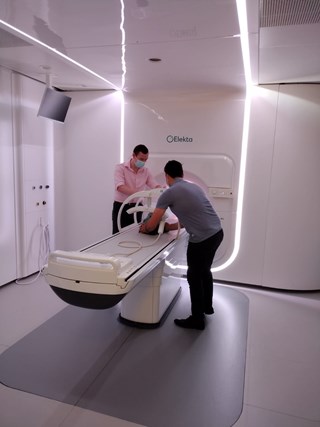Magnetic Resonance Imaging

Magnetic resonance imaging (MRI) is a form of medical imaging that produces high quality pictures of tissues and organs within the body. MRI is a very safe technique though care does need to be taken to manage the MRI unit safely and to ensure patients are screened for certain medical implants. This screening ensures that the MRI safety status of these medical implants can be determined prior to being scanned.
Who needs an MRI scan?
Patients with many different symptoms and injuries may require an MRI for diagnosis or ongoing clinical management. MRI provides many different types of images, which can provide a detailed picture of both anatomy and functions within the body. MRI is also increasingly being used to plan and guide radiotherapy treatments in patients with cancer.
What do clinical scientists working with MRI do?
Clinical scientists specialising in MRI have several key roles within MRI units and help units deliver safe, efficient and high-quality services for patients.
Safety
They help to develop and implement safe working practices in MRI units, which includes advising on unit design, staff MRI safety and physics training and the development of procedures to assure safety for staff and patients. They also support radiographers in assessing patient implant safety and often assess the safety of patient implants themselves. Clinical scientists often provide an expert advisory role known as MR Safety Expert (MRSE), using their detailed knowledge of the physics of MRI to advise on all matters relating to MR safety in MRI units.
Image quality
The role of clinical scientists involves developing and implementing scanner quality control checks. They have a key role in ensuring that the images produced by MRI scanners are optimised and suitable for making a diagnosis. This is an important role in MRI because images are affected by several factors including patient movement and the presence of metal in the body. They may also analyse images to provide additional information for clinicians to aid a diagnosis and management.
Troubleshooting and innovation
Clinical scientists are good problem solvers and help to diagnose problems with MRI images that may affect their use for diagnosis. They often contribute to implementing service improvements in MRI. Examples of service improvements include implementing new types of imaging to improve access to MRI for patients, helping to introduce new technology such as artificial intelligence into routine practice and advising on new state of the art equipment purchases.
They also help with clinical trials and research involving cutting-edge techniques. Clinical scientists often have links with universities and due to their clinical roles are well placed to translate new research into clinical use.